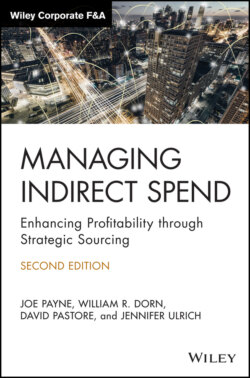Читать книгу Managing Indirect Spend - Joseph Payne, Joe Payne - Страница 70
Performing a Want‐Versus‐Need Assessment
ОглавлениеDuring the Data Collection phase of your initiative, you determined the current requirement or scope of work. This means you identified the costs associated with a particular spend category and what you expect receive for that money. Hand‐in‐hand with a review of alternative technologies, processes, products, and services, it is worthwhile to determine what the current requirement should be. Many organizations tend to develop a certain level of inertia in their procurement processes—if your organization has purchased a certain item in the past, it tends to use that process well into the future. This is especially true if the reason for the purchase is no longer clear, if multiple end users purchase the same or similar products and services, or if the original purchaser has moved into a new role or has left your organization. Part of the reason for identifying current costs is to determine which of those costs can be factored out entirely.
Corporate banking—particularly corporate cash management (corporate checking accounts)—provides a particularly striking example of the value a want‐versus‐need assessment can provide. If you are familiar with this category, then you know that the statement you get every month could detail hundreds or thousands of charges. Many of these charges come with unclear descriptions that are difficult to understand, such as “CD CK Fine Sort” or “ACH NOCS.”
In one client initiative, the authors of this book assisted a client in sourcing banking and treasury services. After collecting recent invoices, we sat down with representatives of the client's bank and reviewed every charge on their invoices. We asked them to explain any charges that were unclear. In the end, we found that many of the charges were based on services that were no longer required or were redundant. In one case, the client was paying for the same reports to be sent to them electronically, on a CD‐ROM, and faxed—each of these services incurred its own charges! This happened primarily because end users were reluctant to retire the old methods when new technologies became available. This concern drove the decision to continue the duplicate services; however, neither the fax nor the CD‐ROM tools had been used for years. Those services were eliminated as part of the initiative. Doing so produced much more in savings than reducing unit prices for them ever could. As you can see from this example, a want‐versus‐need assessment is an integral part of category research.
